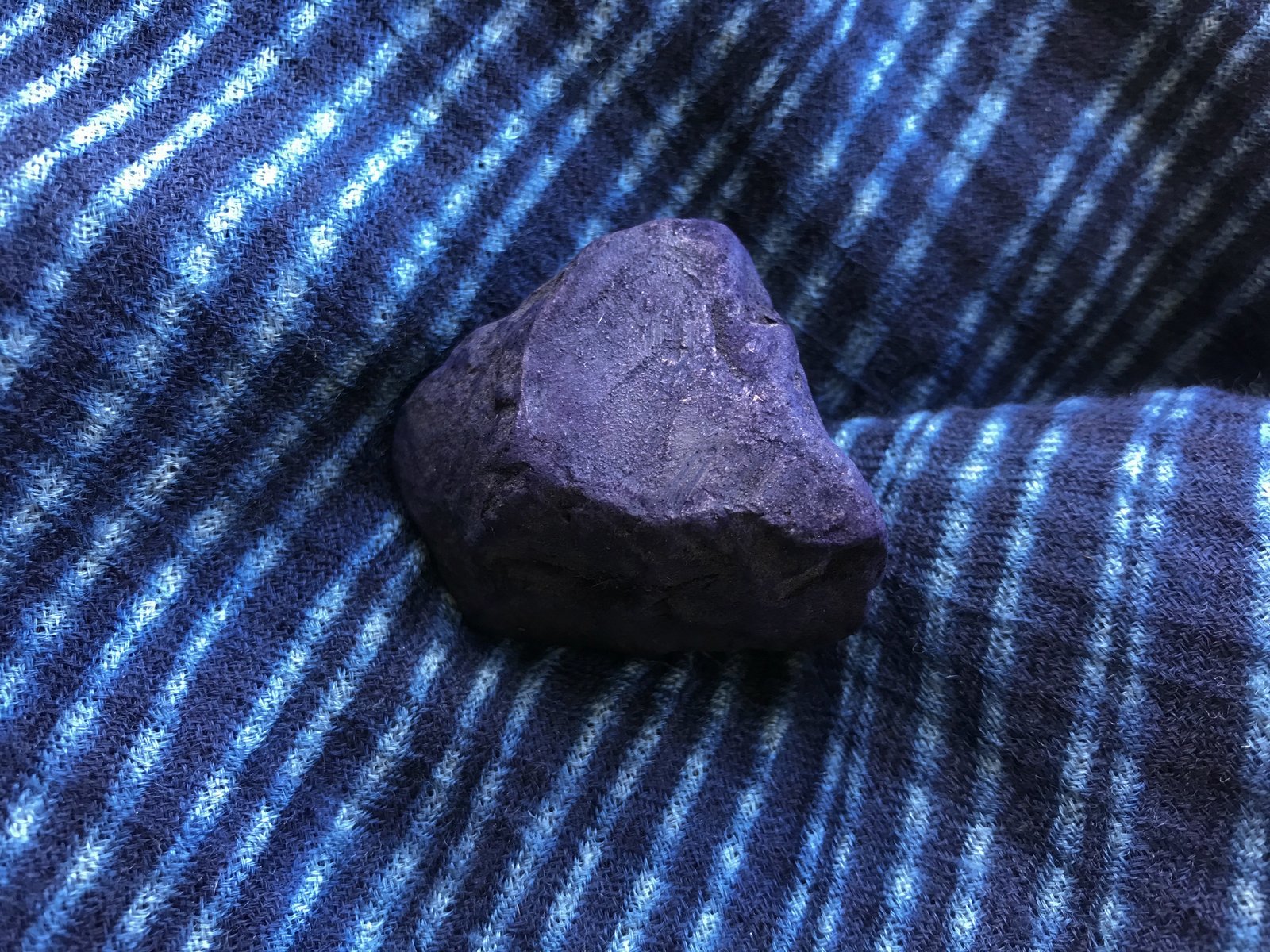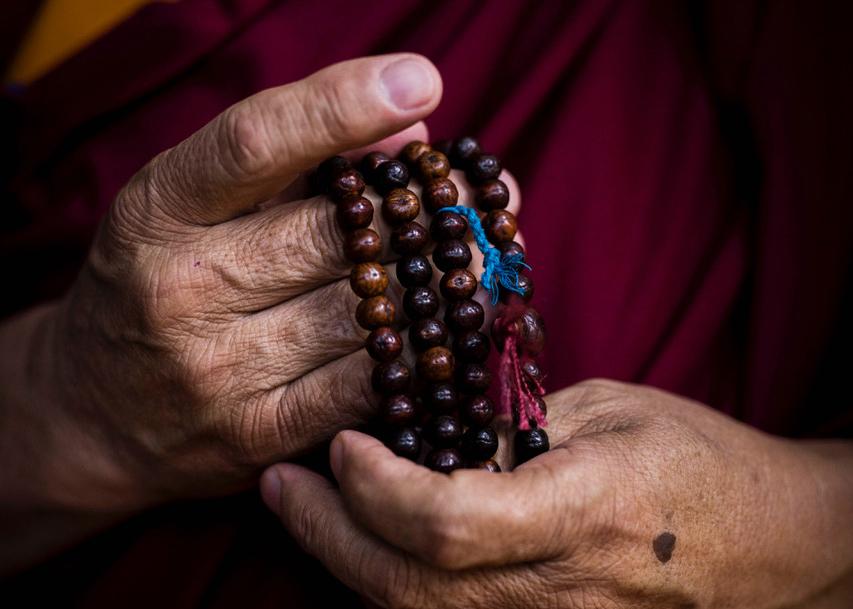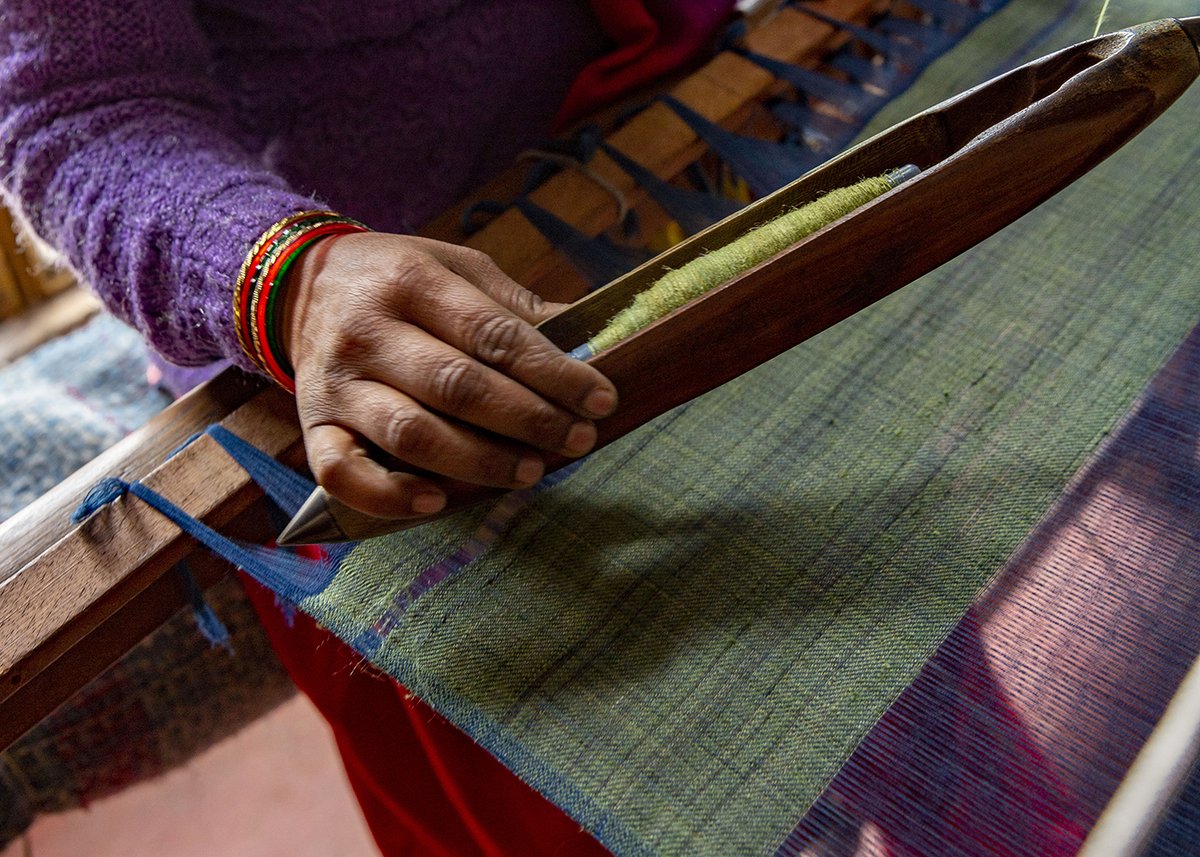
Colours and Dyes
TEA
It is relatively easy to dye with the tea plant leaves, but skill is needed to achieve just the right shades. Black tea gives a warm, red brown result. Green tea creates a lighter, soft beige tone. Worldwide tea production has increased significantly over the years, and a large portion of leaves are not used for consumption. In response to environmental concerns, "tea waste" is now put to good use in dyeing textiles naturally. (The best way to use the earth's resources, right?)
WALNUT
The eastern American black walnut, Juglans nigra, is used to create different shades of brown. As its name implies, it is native to south-eastern Canada and the eastern United States. Such trees can also occasionally be found elsewhere such as Sweden. The shells are soaked in water for 24 hours and then ground down into pigments that give tones from mild pink to brown.
EUCALYPTUS
There are almost 600 species of eucalyptus tree; most are native to Australia. They have leathery, often blue-green leaves. Eucalyptus is known for its anti-inflammatory oil, and many species are even used today in the paper and pulp industry. For dyeing, the leaves are boiled, giving off a rich colour spectrum comprising warm yellow, orange, rust brown and red.
MARIGOLD
Marigold is widely used as decoration outside Indian temples. “We love marigold,” says Rashmi at Avani. It is a real workhorse among plant colours. When used as a dye, it gives tones from bronze to golden yellow. Avani mixes it with camellia flowers to obtain an extra vibrant yellow hue. Marigold is also mixed with pomegranate, myrobalan and madder root for a vivid, reddish orange.
POMEGRANATE
Punica granatum, commonly known as pomegranate, is a deciduous shrub bearing fruit with full of antioxidants. It can grow up to eight metres high and blooms from May to October with red flowers which later develop into pomegranates. Pomegranate use can be traced back to the days of ancient Greece, and the bases for the Old Testament, New Testament and the Koran (The Bible and the Koran?). It grows wild in India, southern Europe, northern Africa and China. Pomegranate shells give a rich, matte colour scale from khaki to olive green. If dyed over with indigo, it gives a dark olive-green hue.
LAC
Rublev lac dye is extracted from resin that is formed when tortoises suck sap from various East Indian milk-producing trees. (Det röda färgämne som utvinns ur lacca har inget etablerat svenskt namn.) The common Indian-based collective name is lac or lacca. The raw material is sometimes called rubber lacquer or shellac in English. Lac dye has been found in Persian wool rugs made as early as 714 BC. Since the end of the 19th century, it has been largely replaced by synthetic dyes, but it is still produced on a smaller scale as an environmentally friendly alternative. Lac gives hues from pink to purple and burgundy.
PIERIS FOREST FLAME
Pieris Forest Flame is a compact evergreen shrub that produces brilliant flame-red foliage that develops to a pink and cream colour before finally settling to present a vivid green display. In West Bengal, India, the shrub is associated with spring, and in other nearby regions, different folk traditions. The flowers can be used to create colour tones from yellow to bright red and are also used in Ayurvedic medicine.
ORGANIC INDIGO
Indigo is one of the oldest dyes known to man. Its use arose in different parts of the world at the same time. The oldest find is dated to around 4200 BC in Huaca, Peru. Indigo was used by the ancient Egyptians, Persians and Romans; for the uniforms of Napoleon's armies; and for the first, blue denim jeans in the 19th century. Synthetic indigo was invented around 1880. It is cheaper and more efficient but has negative environmental effects.
There are several hundred plants in the world whose extracts together with oxygen give an indigo blue colour, but only a handful have dyeing properties robust enough to withstand the textile process. Isatis tinctoria has been used in southern Europe and Central Asia. In Japan, Knotweed Persicaria tinctorium is preferred. Indigofera tinctoria has the strongest concentration at 10-50% pure indigo and is therefore most often used for textile dyeing. Indigo dyeing is quite similar to making bread dough. Leaves are allowed to ripen and ferment in a large vat, and the mixture is carefully stirred intermittently. This process of making organic indigo takes about 5-10 days and involves different formulas, ratios and methods. The result is a batter that is either used directly or dried into blocks or loose pigment which is absorbed during dyeing. It is a complicated process that requires commitment, but in return, the result is the most beautiful deep blue colour with a very long and fascinating history.
Read more about all the steps in the process and our Norwegian friend, indigo master Axel Becker, here.
We recommend Kerstin Neumuller and Douglas Lubanko's beautiful handbook on INDIGO.
MYROBALAN
Terminalia chebula, commonly known as myrobalan, is an important and useful plant in textile production and Ayurvedic medicine. It is used in India, Nepal, Sri Lanka, Burma and Thailand as a mordant and for beige, umbra and black hues.
Myrobalan grows in the lower Himalayas. It has small, oval leaves and bright yellow flowers. It is the nuts of the tree that are used as both a mordant and a colouring agent for a soft brown. Darker brown and black are obtained by combining it with water and iron.
EUPATORIUM
This is a plant genus more commonly known as the aster family comprised of 40 species. It is an invasive species found on the slopes of the Himalayas. Our friends at the Avani Cooperative have hired local workers to harvest the plant by pulling it up with the roots to prevent its spread and consequent elimination of other plant species. Eupatorium gives a soft eggshell to orange tone. Dyeing it over with indigo results in a beautiful spectrum spanning from yellow to bluish green.
AYURVEDISKA FÄRGER
In Sanskrit, the root words of Ayurveda, ayus means "life", veda means "knowledge". Ayurvedic medicine is a form of Indian medicine whose origins have been traced back to around 5000 BC. It is based on a holistic approach.
The Indian government supports both research and education in Ayurveda. Our supplier, Mathew, operates in Kerala, where the government has been investing in traditional hand weaving and Ayurvedic dyeing methods with herbs, berries, roots, etc. from special Ayurvedic plantations since 2001. Mathew collaborates with Ayurvedic doctors to achieve just the right combination of herbs that gives colour to textiles. The colours themselves are not important; it is the Ayurvedic medical combination that is the goal. Considered anti-bacterial, the yellow comes from four different types of turmeric. Pink and orange come from the manjistha herb and red sandalwood. The brown is obtained by dyeing with aloe vera and the acacia tree. Green is with neem, a tree in the mahogany family, and turmeric. Gray comes from vetiver oil from an Indian grass and the Himalayan arjuna herb. Blue is created by dyeing with natural indigo and a variety of herbs.
In 2009, Mathew launched a hand-woven yoga mat made of organic cotton and dyed with Ayurvedic herbs. It was a great success in local yoga culture and the media.
CONVENTIONAL DYEING
Conventional synthetic textile dyeing is arching towards more and more environmentally friendly methods. Research is continuously being done on the subject and development is indeed progressing.
Since it can be difficult fix colours on some protein-based fibres such as yak wool, our friends Marichi in the Himalayas use synthetic dyes according to the latest health and environmentally approved methods and guidelines. We plan to start testing and hopefully using natural dyes on yak wool together with Marichi in the very near future.

